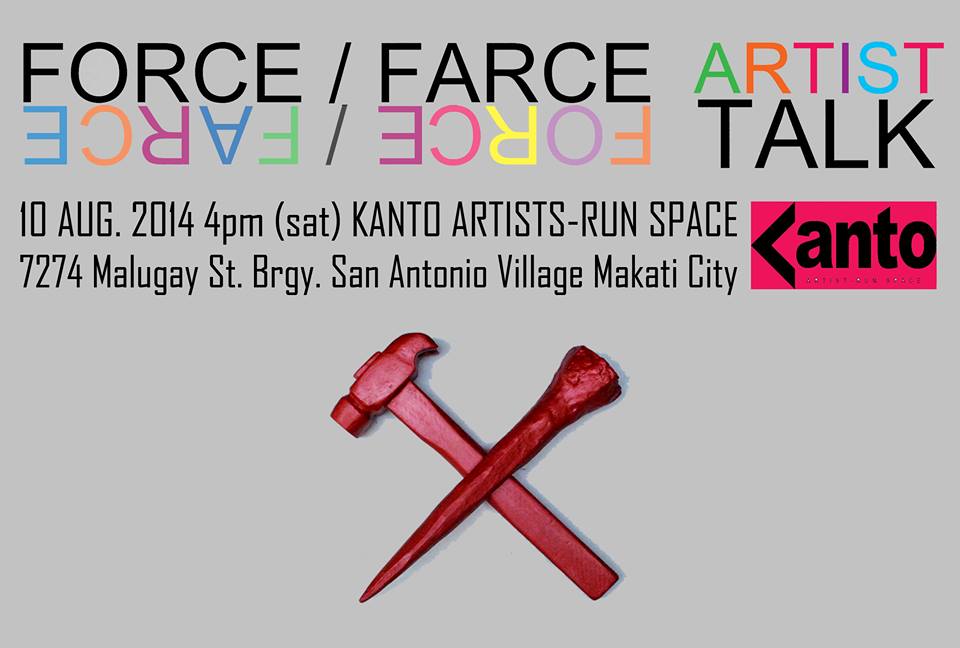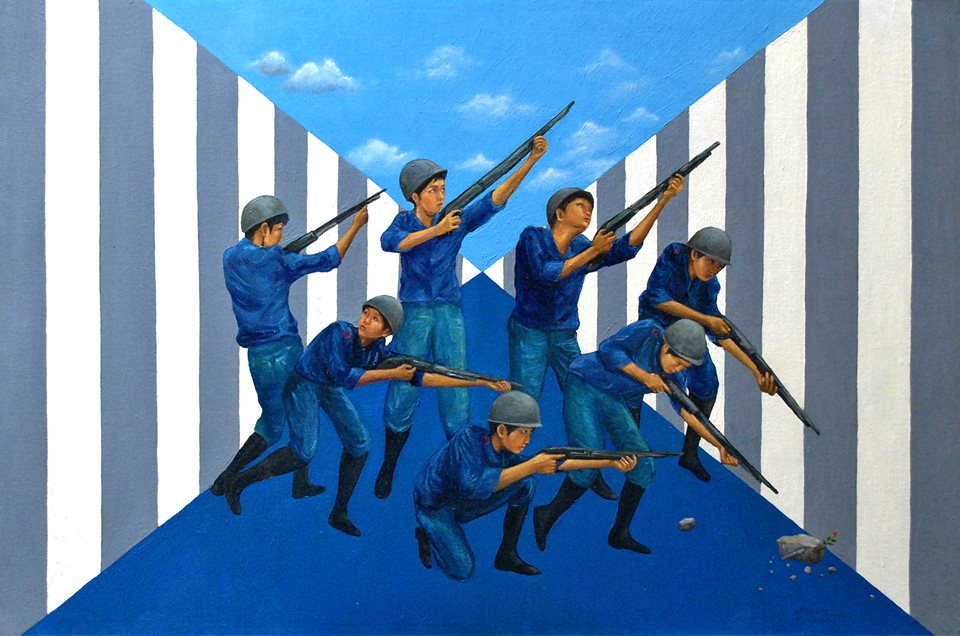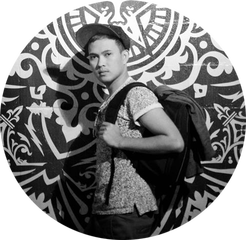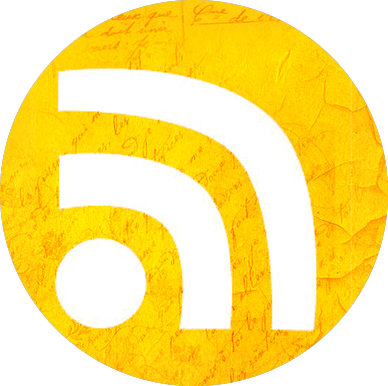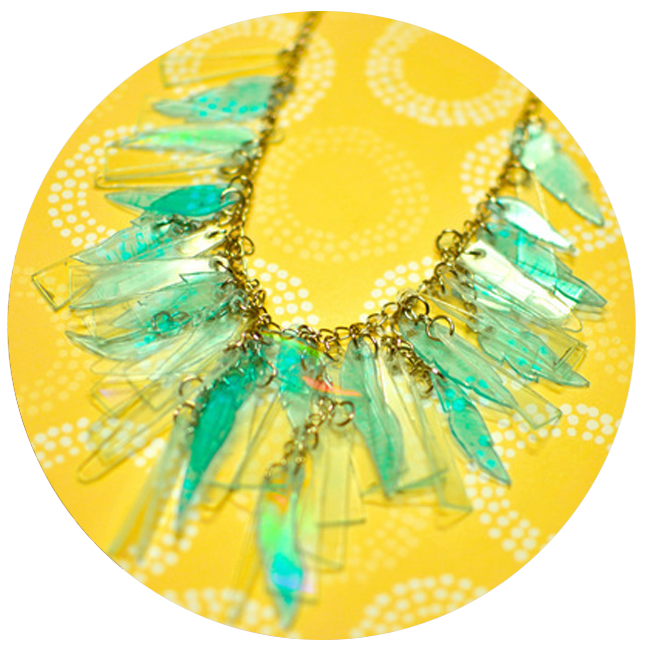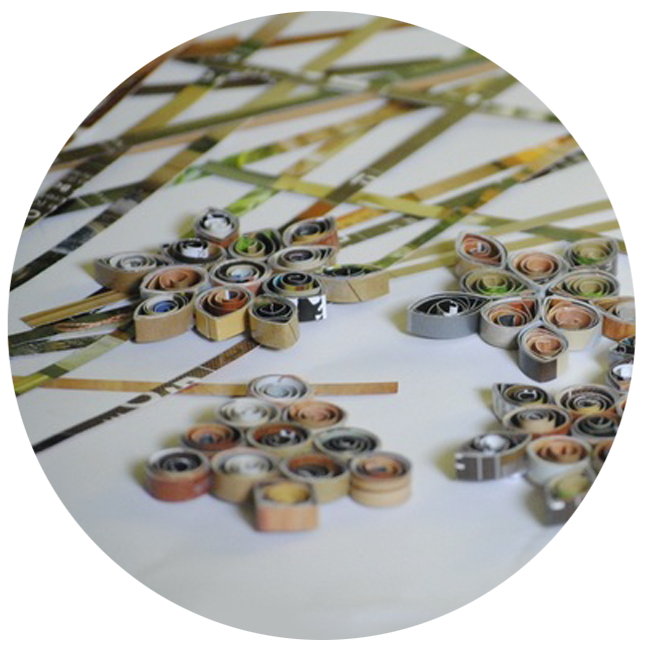Lisa Ito
In her first solo exhibition, artist and musician Maan de Loyola delves into the question of power and its contradictions by projecting as self-portraits images of the proletariat and the soldiery—two social forces and occupations continually suspended between states of change. Workers have been historically associated with the revolutionary avant garde and with the most dispossessed of social classes, exploited by the system but capable of organising its ranks to change it. On the other hand, the army’s role as a leading state apparatus of control exhibits a dual nature, capable of both maintaining and disrupting states of power.
In 2010, de Loyola started reworking traditionally-masculine images of the workforce and the armed forces, transforming these into a series of self-portraits and small objects over the course of four years. De Loyola positions these entities in various poses, cloning self until the figures multiply and take their assigned places and poses on the canvas space. The artist’s blank-faced countenance and slender, sloping physique replaces the solid musculature and steely gaze of thehardened worker and trained soldier. Her arms wield their tools and arms tentatively, almost fragile in their slightness, yet with a sense of determination and purpose.
De Loyola’s peculiar style of realism focuses on the rendering of the human figure and their garments, employing symbols, patterns and icons to denote her subject’s milieu and social contexts. Unlike the images produced by the previous generation of Social Realist artists, they are not transparent, straightforward portraits of the communities beyond the gallery’s borders. Inhabiting in a fictive realm and floating in space, her images are conjured characters: taken from a pastiche of recollections and impressions from the real world and taking on the character of icons
This same sense of ambivalence penetrates de Loyola’s portrayals of the armed forces. Like workers, these are figures employed on singular missions: agents tasked to destroy and enforce the order of the status quo. Her figures in Unseen Threat, however, implicitly question the clear-cut distinctions between black and white, good and evil, target and friend: how well does one know the enemies one is assigned to eliminate? Another work, titled Unknown Enemy, presses on with these questions. The inquisitive, tentative countenances of her figures, in contrast to their lithe and determined posturing, seem to beg the question: who are the enemies and what are we holding arms for? But the road between sea and sky is wide, and so are the possibilities of choosing between what is right and what is unjust.
The representation of self through these identities becomes an allegory for the body politic and sectors coexisting in society, gently disrupting portrayals of both labor and armed forces as monolithic and one-dimensional apparatuses, solely controlled from above. De Loyola employs symbolism throughout the series to convey how little ruptures within the system are possible , connecting works produced years apart through singular images of hearts, tools, and flowers. Denoting little acts of hope and resistance, the appearance of these icons imbue her compositions with a surreal though comforting presence.
Yet all personas are fleeting identities, symbols of what lies beneath. One senses that the artist continually puts herself in their positions, to comprehend and interrogate their persisting presences. This is implied in the work titled Seer: an austere self-portrait of the artist pointing and staring back at the viewer, her hand resting on heart. Unlike the rest, this shows the artist shorn of all worldly cares and symbolic adornments, looking eye to eye. This is perhaps the metaphor and message that threads the disparate works in the show together: the challenge is to know self, to draw from one’s well of interior strength to face reality beyond the painter’s canvas.
Eventually, de Loyola’s figures assume entirely new personas, appropriating gesture, costume and posture and digitally altering them to create new, hybrid beings. These are seen in the works titled Guardian I, Guardian II and Sentinel: a suite of icons standing like superheroes or deities pledging protection. In these images, the state’s soldier and the corporation’s laborer is turned into a rebel and worker from a new, still emerging world. In the end, de Loyola’s disparate personas take on a more determined and individual stance, poised as if ready to help deliver the viewer from uncertainty and strife.
About the artist
Maan de Loyola studied painting at the University of the Philippines College of Fine Arts and has participated in over 20 exhibitions since 1991. Force/Farce is her first solo exhibition. She comes from a family with both activist politics and artistic leanings—father Gene is a painter and sibling Raquel de Loyola is a performance artist. De Loyola is a member of the TutoK Artists Initiative and Kababaihan sa Sining at Bagong Sibol na Kamalayan (Kasibulan), two organisations involved in the advocacy for human and women’s rights. She is also the guitarist for the band, earthfishfish.
Maan de Loyola
Force/Farce
26 July - 10 August 2014
Kanto Artist Run Space
Artist Talk: August 10, 4pm
